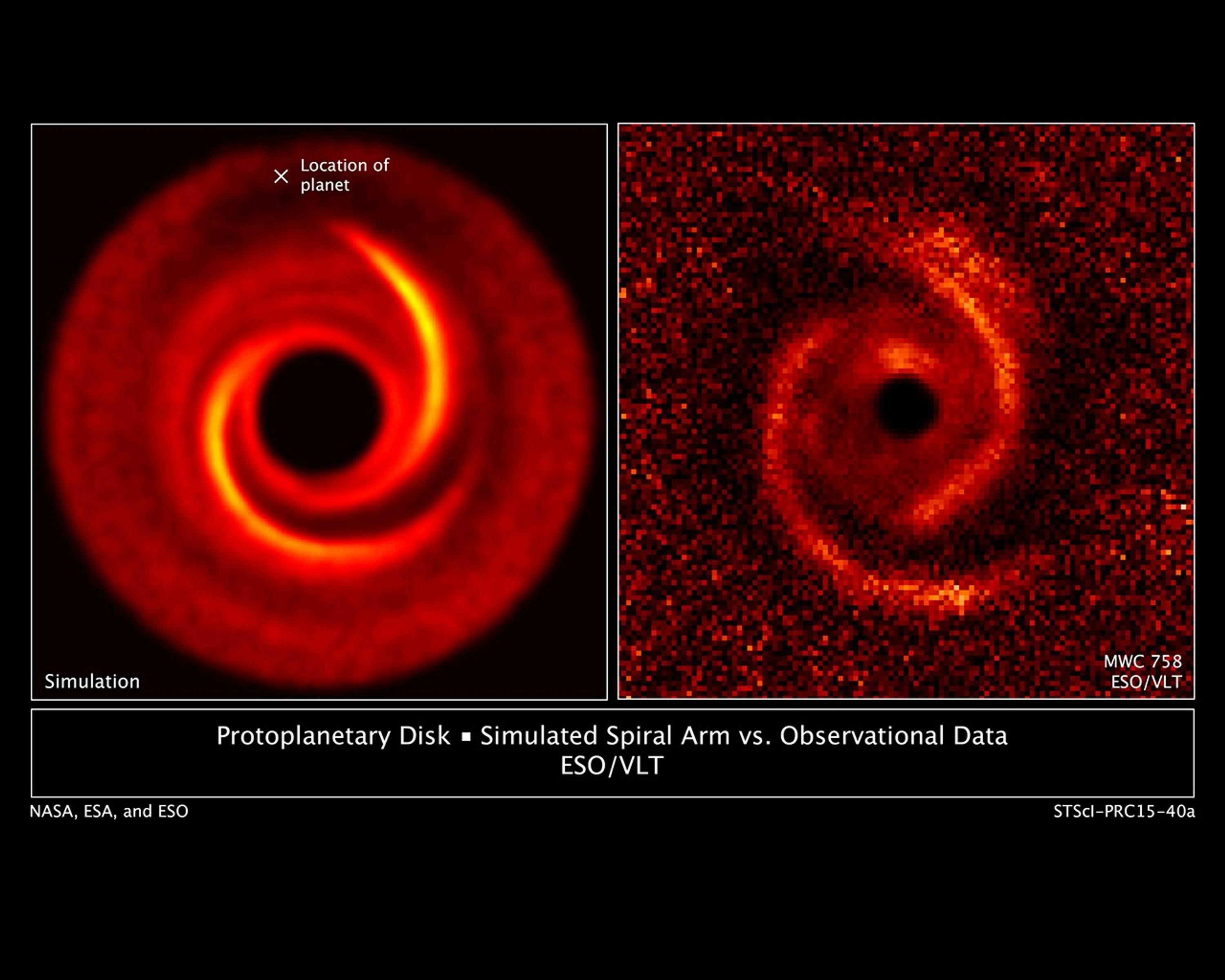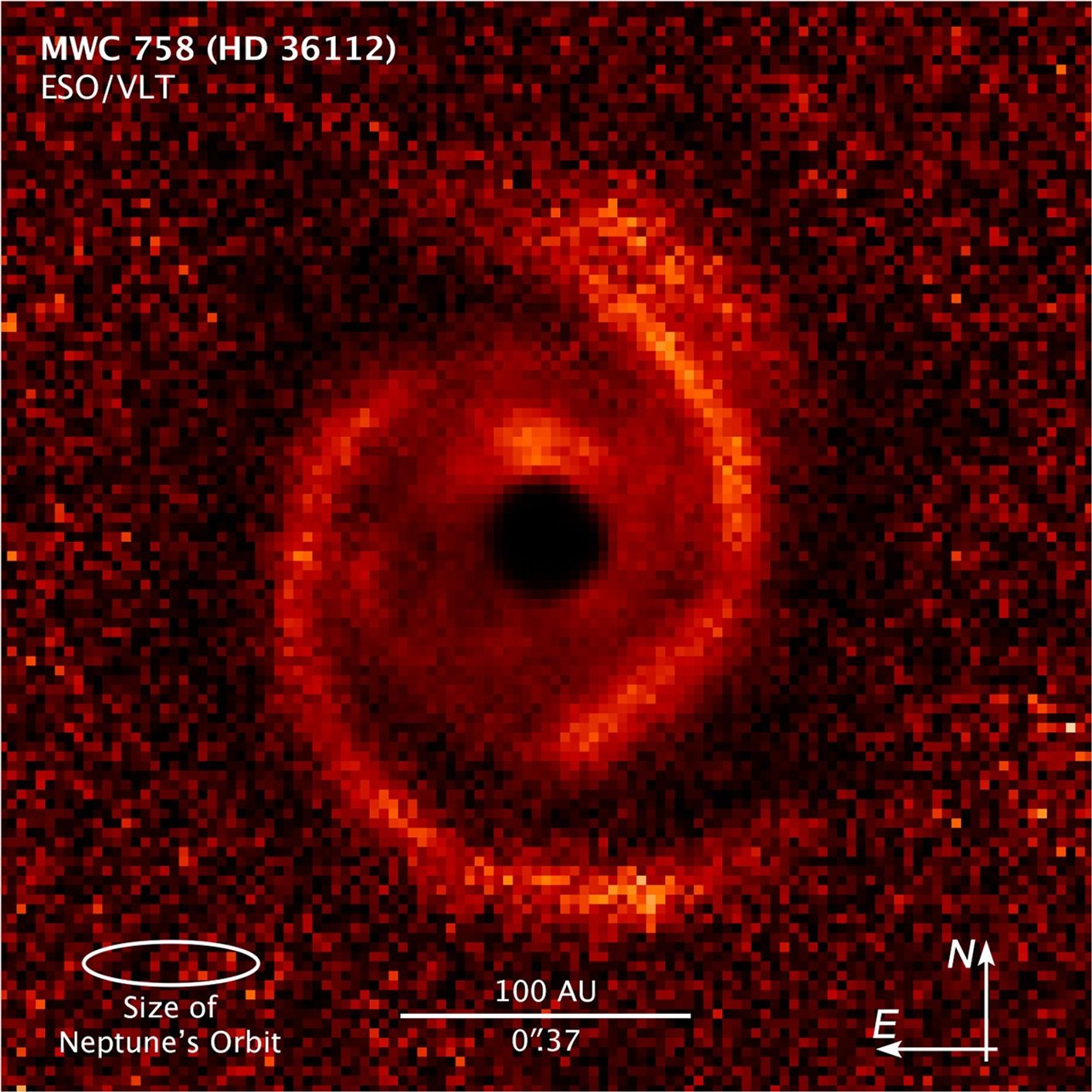1 min read
Protoplanetary Disk: Simulated Spiral Arm

About the Object
- R.A. PositionR.A. PositionRight ascension – analogous to longitude – is one component of an object's position.05h 30m 27.53s
- Dec. PositionDec. PositionDeclination – analogous to latitude – is one component of an object's position.25° 19' 57.08"
- ConstellationConstellationOne of 88 recognized regions of the celestial sphere in which the object appears.Taurus
- DistanceDistanceThe physical distance from Earth to the astronomical object. Distances within our solar system are usually measured in Astronomical Units (AU). Distances between stars are usually measured in light-years. Interstellar distances can also be measured in parsecs.650 light-years (200 parsecs)
- Object NameObject NameA name or catalog number that astronomers use to identify an astronomical object.MWC 758
- Object DescriptionObject DescriptionThe type of astronomical object.Young star with protoplanetary disk
- Release DateOctober 29, 2015
- Science ReleaseSpirals in Dust Around Young Stars May Betray Presence of Massive Planets
- Credit
Related Images & Videos

Protoplanetary Disk: Simulated Spiral Arm vs. Observational Data
[ Right] – Observations taken by the European Southern Observatory's Very Large Telescope show a protoplanetary disk around the young star MWC 758. The disk has two spiral arms that extend over 10 billion miles from the star. [Left] – A computer model reproduces the...
Share
Details
Last Updated
Aug 17, 2025
Contact
Media
Claire Andreoli
NASA’s Goddard Space Flight Center
Greenbelt, Maryland
claire.andreoli@nasa.gov






























